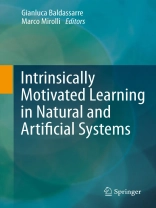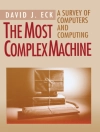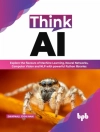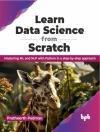It has become clear to researchers in robotics and adaptive behaviour that current approaches are yielding systems with limited autonomy and capacity for self-improvement. To learn autonomously and in a cumulative fashion is one of the hallmarks of intelligence, and we know that higher mammals engage in exploratory activities that are not directed to pursue goals of immediate relevance for survival and reproduction but are instead driven by intrinsic motivations such as curiosity, interest in novel stimuli or surprising events, and interest in learning new behaviours. The adaptive value of such intrinsically motivated activities lies in the fact that they allow the cumulative acquisition of knowledge and skills that can be used later to accomplish fitness-enhancing goals. Intrinsic motivations continue during adulthood, and in humans they underlie lifelong learning, artistic creativity, and scientific discovery, while they are also the basis for processes that strongly affect human well-being, such as the sense of competence, self-determination, and self-esteem.
This book has two aims: to present the state of the art in research on intrinsically motivated learning, and to identify the related scientific and technological open challenges and most promising research directions. The book introduces the concept of intrinsic motivation in artificial systems, reviews the relevant literature, offers insights from the neural and behavioural sciences, and presents novel tools for research. The book is organized into six parts: the chapters in Part I give general overviews on the concept of intrinsic motivations, their function, and possible mechanisms for implementing them; Parts II, III, and IV focus on three classes of intrinsic motivation mechanisms, those based on predictors, on novelty, and on competence; Part V discusses mechanisms that are complementary to intrinsic motivations; and Part VI introduces tools and experimentalframeworks for investigating intrinsic motivations.
The contributing authors are among the pioneers carrying out fundamental work on this topic, drawn from related disciplines such as artificial intelligence, robotics, artificial life, evolution, machine learning, developmental psychology, cognitive science, and neuroscience. The book will be of value to graduate students and academic researchers in these domains, and to engineers engaged with the design of autonomous, adaptive robots.
The contributing authors are among the pioneers carrying out fundamental work on this topic, drawn from related disciplines such as artificial intelligence, robotics, artificial life, evolution, machine learning, developmental psychology, cognitive science, and neuroscience. The book will be of value to graduate students and academic researchers in these domains, and to engineers engaged with the design of autonomous, adaptive robots.
Inhaltsverzeichnis
Chap. 1 – Intrinsically Motivated Learning Systems: An Overview.- Chap. 2 – Intrinsic Motivation and Reinforcement Learning.- Chap. 3 – Functions and Mechanisms of Intrinsic Motivations.- Chap. 4 – Exploration from Generalization Mediated by Multiple Controllers.- Chap. 5 – Maximizing Fun by Creating Data with Easily Reducible Subjective Complexity.- Chap. 6 – The Role of the Basal Ganglia in Discovering Novel Actions.- Chap. 7 – Action Discovery and Intrinsic Motivation: A Biologically Constrained Formalisation.- Chap 8 – Novelty Detection as an Intrinsic Motivation for Cumulative Learning Robots.- Chap. 9 – Novelty and Beyond: Towards Combined Motivation Models and Integrated Learning Architectures.- Chap. 10 – The Hippocampal-VTA Loop: The Role of Novelty and Motivation in Controlling the Entry of Information into Long-Term Memory.- Chap. 11 – Deciding Which Skill to Learn When: Temporal-Difference Competence-Based Intrinsic Motivation (TD-CB-IM).- Chap. 12 – Intrinsically Motivated Affordance Discovery and Modeling.- Chap. 13 – Intrinsically Motivated Learning of Real-World Sensorimotor Skills with Developmental Constraints.- Chap. 14 – Investigating the Origins of Intrinsic Motivation in Human Infants.- Chap. 15 – A Novel Behavioural Task for Researching Intrinsic Motivations.- Chap. 16 – The “Mechatronic Board”: A Tool to Study Intrinsic Motivations in Humans, Monkeys, and Humanoid Robots.- Chap. 17 – The i Cub Platform: A Tool for Studying Intrinsically Motivated Learning.
Über den Autor
Dr. Gianluca Baldassarre is a Researcher at the Institute of Cognitive Sciences and Technologies (ISTC) of the Italian National Research Council (CNR) where he is a member of the Laboratory of Computational Embodied Neuroscience; his research interests include computational embodied neuroscience, psychology, neuroscience, developmental robotics, artificial life, and machine learning.
Dr. Marco Mirolli is a Researcher at the Institute of Cognitive Sciences and Technologies (ISTC) of the Italian National Research Council (CNR) where he is a member of the Laboratory of Computational Embodied Neuroscience Laboratory; his research interests lie in the study of behavior through computer simulations, in particular the evolution of communication and language, the role of language as a cognitive tool, the biological bases of motivations and emotions, and the role of intrinsic motivations in cumulative learning.












